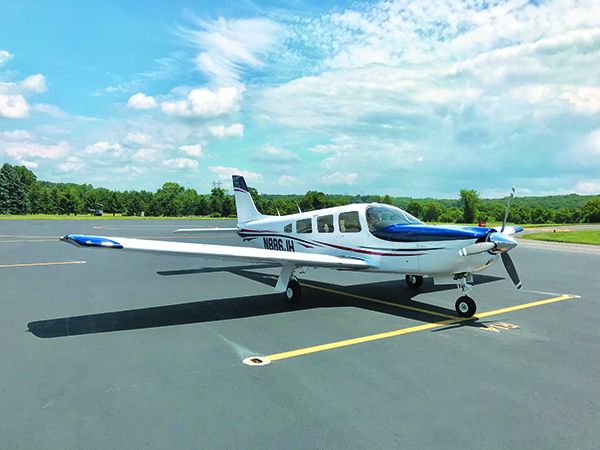Earn your wings in an entry-level Piper PA-28 and a logical step-up may be a PA-32R. From the early 300-HP Lance to the late-model Saratoga II TC, these high-performance retrac singles are nicely supported (both in maintenance and aftermarket mods), plus pilots and passengers like them for load-hauling go-places travel.
Comparable-performing singles are the Beech 36 Bonanza and Cessna 210 Centurion, and some rightfully argue that the Bonanza handles better than the Piper and Cessna, while slightly winning the speed race. The Cessna 210 generally has better short-field performance and carries more than the Bonanza and Piper, but its landing gear system is more complex.
But Piper’s simpler Lance/Saratoga series (also available in fixed-gear variants) can carry a lot, albeit more slowly, and usually is thought of as the most stable of the three when flying IFR. That’s a plus for newly branded instrument pilots upgrading from trainers.
Another plus for the Piper is a wide range of used-market prices—choose your budget, although prices are trending upward. The winter 2021 Aircraft Bluebook suggests the earliest PA-32R-300 Lance (1976) might sell for around $87,000, while the last of the turbocharged Saratoga II TC (2008) models are priced we’ll north of $400,000. Machines with the latest avionics and new paint and interior fetch big dollars.
In this report we’ll focus mainly on the retrac (the PA-32R), but offer a healthy amount of real-world feedback on the fixed-gear PA-32, especially in a market where insurance coverage may be an issue.
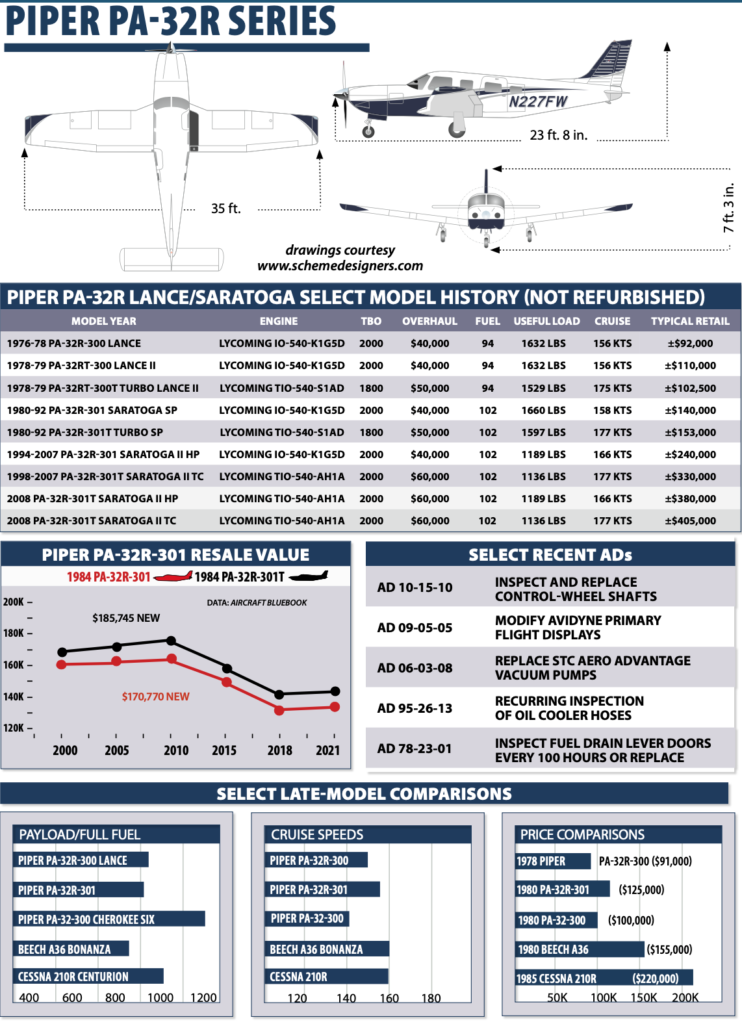
MODEL HISTORY
Flash back to the late 1970s when a major flood at Piper’s Pennsylvania plant wiped out the tooling for the popular PA-24-series Comanche. That airplane had an option for third-row seating—sizable utility for families traveling with small kids. Ultimately, Piper abandoned the Comanche in favor of a new retractable-gear model derived from the fixed-gear PA-32 Cherokee Six.
At that time, Piper was selling the Seneca, a light twin derived from the Cherokee Six airframe, and economically it made sense to build on a familiar design. Not much needed to be done to the Cherokee Six: The PA-32 was already available with the 300-HP Lycoming IO-540, so essentially the only change was to fit a retractable landing gear. That meant a new engine mount and changes to the wing. Piper also modified the wing spar in the process, allowing a 200-pound boost in gross weight, to 3600. The new airplane was dubbed the PA-32R Lance, which was introduced to the public in 1976.
The powerplant was the 300-HP Lycoming IO-540-K1G5D with a 2000-hour TBO in the normally aspirated airplanes and the TIO-540-S1AD with a TBO of 1800 hours in the later turbocharged models. (The first 140 Lances built had K1A5D engines, the only difference being in fuel pump design.) The D means that the engine has the infamous Bendix dual magneto system.
The fuel system originally held 94 gallons in four tanks, later upped to 102 gallons. That might not seem like a lot, but it’s a decent stretch in utility, especially when you have to head to an alternate airport or when the winds are on the nose.
FAMILIARITY, T-TAIL VARIANT
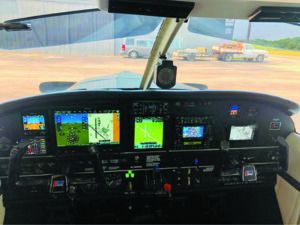
What makes the PA-32R a good step-up airplane for those who trained in Pipers (and for field service) is that it borrows heavily from its siblings. Moreover, the main landing gear is much like the Seneca’s—logical, since the basic airframe is the same—and the nose-
gear resembles the one on the Seneca and the Arrow. And like the Arrow, the PA-32R also came with Piper’s automatic extension system for the landing gear. The fuel system is similar to the Seneca’s.
The Lance remained essentially unchanged for two years. In the late 1970s, though, someone at Piper decided that T-tails were a good idea. We have to wonder if the responsible parties were aerospace engineers or experienced pilots, based on the aerodynamic qualities of the Piper T-tail singles in general. The Lance wasn’t the only T-tailed Piper. This also was when the PA-38 Tomahawk was rolled out and the T-tailed Arrow IV debuted.
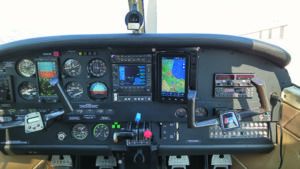
Piper combined the T-tail’s introduction to the PA-32 airframe with a turbocharged variant. These two aircraft, the Lance II (PA-32RT-300) and Turbo Lance II (-300T), were not very we’ll received. Though Piper ballyhooed the supposed advantages of the T-tail (smaller size and weight, reduced pitch changes with trim and flap application), the truth was that when the stabilator was moved up out of the propwash, the airplane’s handling suffered. In particular, takeoff runs increased significantly since it took a good deal of speed for the stabilator to become effective, and when it did, the result was a pronounced pitch-up. Some complained of lack of rudder authority. The T-tailed Lances were also sensitive to trim settings. The T-tail was also a pain to preflight, especially in winter, when a ladder is required to remove snow from the stabilator.
When pilots found out about these traits, sales plummeted. In 1980, two years after the T-tail’s introduction, Piper saw the light and reverted to the original tail design.
At the same time, the company applied the same wing upgrade that had already appeared in the PA-28 series. The constant-chord “Hershey Bar” wing was replaced with a semi-tapered planform. Piper also “simplified” the designation of the entire PA-32 series, renaming them the Saratoga SP. The fixed-gear versions were simply called Saratogas. As before, there were turbo versions available, designated by a T at the end of the model number. The fixed-gear option was dropped in 1993, only to reappear briefly as the Piper 6X from 2004-2007. The retractable version saw various iterations under the Saratoga name until 2008.
Used values of the T-tail models have historically been lower than those of the conventional-tailed airplanes, which makes the T-tail a relative bargain in a six-place airplane. Owners of T-tails seem to like them. It should be noted that although T-tail owners without exception stand behind their airplanes and claim the poor reputation is undeserved, the airplane nevertheless has documented performance differences from the otherwise identical straight-tail version (more on this later).
HIGH-FLYING TURBOS
For some, turbocharging is a must, and there are versions so equipped. The turbocharged Lycoming engines have AiResearch turbos with wastegates mechanically linked to the throttle controls. But think old school. The pilot has to adjust the throttle to maintain manifold pressure during climb, and it is possible to overboost the engine if too much throttle is applied. (The MP gauge is inconveniently located in front of the pilot’s right knee, but there is an overboost warning light on the panel’s eyebrow.)
The Turbo Lance II has an unusual updraft engine-cooling system that takes air in through a low-mounted “fish-mouth” oval scoop and forces it up over the cylinders, then back down and out through cowl flaps. Owners say the system is ineffective and requires the use of extra fuel and step-climbs to avoid engine meltdown. The Turbo Saratoga SP has a more effective cooling system replacing cowl flaps with louvers mounted on top and on the bottom of the cowling. A popular mod is to add an intercooler.
A PASSENGER’S CABIN
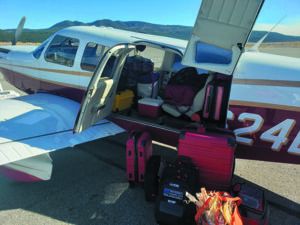
Most find the interior of the PA-32R quite comfortable. The cabin is over 10 feet long and 3.5 feet high. Shoulder room for the front and center seats is 4 feet and 3.5 feet for the back row. Most 32Rs have club seating and there’s a big side door for the passengers, who need not clamber over a wing to enter the airplane. It’s remarkably quiet, due in no small part to the presence of a nose baggage compartment located between the cabin and engine. The rear seats are easily removed for cargo, and some owners just leave the rear ones at home most of the time. Because of the wide cabin, there’s plenty of room on the panel for any gadget one might want. Other than that, it’s pure Piper single.
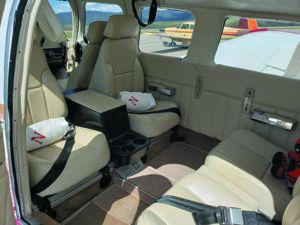
The fuel selector is a bit different from the familiar PA-28 sidewall-mounted pointer, being sensibly located on the center pedestal. One thing we don’t like is the sump-draining procedure. Not a simple matter of sticking a fuel tester in a quick drain, the procedure requires the pilot to first put a bucket under a nozzle in the belly, then get back in and hold down a lever located under the right center-row seat while simultaneously switching tanks.
This gymnastic routine continues for a minimum of 18 seconds due to the length of the fuel lines, after which the pilot gets to go back outside, look in the bucket and try to figure out which tank the water came from.
Later PA-32s have some good crashworthiness features, including seats with S-shaped frames designed to progressively crush on impact, plus a thickly padded glareshield.
STUFF OR FUEL?
Typical of single-engine airplanes, the Lances and Saratoga SPs force the pilot to choose between filling the cabin and filling the tanks. Still, an airplane this size is quite practical when it comes to hauling, because carrying four good-sized adults with lots of baggage and full fuel is easily possible. The turbo models are a bit more limited. Realistically, with six people aboard, a PA-32R can carry enough fuel to fly 2.5 to 3.5 hours. The CG range is quite wide, but with only two people aboard, care must be taken to avoid exceeding the forward limit. There are two baggage compartments, both with a 100-pound capacity: the nose bay and a large one aft of the rear. One way to improve the T-tail’s squirrelly handling reputation is to put 50 pounds in the aft baggage compartment to bring the CG aft into the center of the range. The ones we’ve flown loaded this way are much more manageable.
NOT REALLY A SPEEDSTER
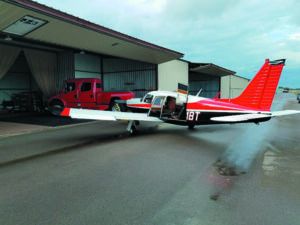
While 150 knots isn’t all that bad, when compared to other big retractables the PA-32Rs are rather slow. Almost any A36 Bonanza or Cessna 210 will walk away from the 32R, being about 10 knots faster, although we’ve flown well-rigged, speed-mod-equipped models that almost close the gap.
At 75 percent power, a Lance cruises at 158 knots while burning 18 GPH. The Saratoga SP isn’t faster, but improvements in induction air cooling allow their engines to be leaned to peak EGT, saving a couple of gallons an hour. The turbocharged airplanes can cruise at 177 knots while burning nearly 20 GPH up high, but at lower altitudes they’re only a couple of knots faster on the same fuel.
Because of its T-tail, the Lance II has a significantly longer ground roll than the conventional-tail models. The book shows a 1650-foot ground roll under standard conditions, and notes the roll will be one-quarter longer if the airplane is loaded toward its forward CG limit. Ground rolls for the Lance and SP are posted as 1380 and 1200 feet, respectively. Initial rate of climb is just over 1000 FPM—not blazing compared to something like a Cirrus, but not terrible, either.

The 100 most recent accidents of the Piper PA-32R series confirmed our opinion regarding the good ground-handling characteristics of the line. There were only three runway loss of control (RLOC) events—well below what we expect to see for a nosewheel airplane.
The biggest contributor to PA-32R aluminum litter on the planet proved to be improperly performed engine maintenance. Maintenance technicians improperly installed cylinders and fuel lines with some regularity.
One A&P, performing his first ever overhaul of a big-bore Lycoming, told investigators that he didn’t follow the manufacturer’s maintenance manual because he “didn’t like the way it was laid out.” He also failed to correctly torque a number of bolts, leading to a catastrophic crankshaft failure.
Piper pleased the market when it stretched the basic Cherokee to create the Six, and then retracted the gear—creating one of the roomiest cabins in general aviation. However, a pilot still has to use some care when loading the airplane—none of them will carry “anything you can shove in the door.” Seven pilots hit obstructions or rising terrain after takeoff and a few more stalled the airplane during initial climb. Of those, several were over gross.
One pilot of a heavily laden Lance raised the nosewheel early in the takeoff roll, lifted off just above stall speed and then discovered that he couldn’t climb out of ground effect.
Another owner decided to use his as a freighter—carrying loads of ceramic tiles to where he was building a house. All went we’ll on the first trip. On the second, he got 666 pounds of tile through the door and closed it. Unfortunately, he didn’t bother with one minor detail of flying freight—securing it. Over gross only “slightly,” he got the airplane to his destination.
Decelerating on final approach, the tiles slid forward, moving the CG in the same direction and making a flare to landing questionable. The pilot firewalled the throttle, which brought the nose up. Unfortunately it also caused the tiles to slide aft, moving the CG beyond the aft limit. The aircraft stalled and crashed.
Failure to inspect and correct caused three accidents in which the stabilizer control cable turnbuckle corroded and broke—causing the nose to pitch down rapidly.
We were surprised by the number of VFR into IMC accidents as we’ll as the number of loss of control (LOC) in IMC accidents. We don’t know what caused PA-32R pilots to decide that they could fly VFR in miserable weather (and several had received weather briefings). We also have flown the marque in IMC repeatedly and have noticed no unusual handling characteristics. Sadly, two pilots were so distracted while trying to program their autopilots that they flew into terrain.
Having to select a fuel tank brought several pilots to grief as they ran one dry and didn’t change tanks or they turned the fuel selector off on downwind or positioned it between detents. Some simply ran out of fuel. We were impressed by the CFI whose preflight determination of fuel quantity consisted of shaking the airplane and hearing the fuel slosh. He said that told him he had enough fuel for his flight—but he didn’t.
MAINTENANCE
Don’t plan on doing it on the cheap. These are complex aircraft (the fixed-gear, normally aspirated models are obviously simpler) and the oldest models are pushing 45 years old. Some Turbo Lance II owners we’ve spoken with complained about their hot-running engines. (We’ll never forget one owner saying his engine once toasted the forward baggage compartment sufficiently to melt plastic diaper bags that had been stowed there.) However, as noted below, there are modifications designed to eliminate the heat problem. We suggest it.
Among recurring ADs are 77-12-06, which requires the shanks of Hartzell propellers to be inspected and cold-rolled every 2000 hours or five years (90-2-23 also calls for a one-time inspection and possible replacement of the hub, and 94-17-13 requires recurrent inspection of hub grease fittings); 78-23-01, which requires the fuel drain lever doors in naturally aspirated Lances to be checked every 100 hours until they’re replaced; 93-5-22, which addresses the fuel injector lines on the TIO-540-S1AD engine; and 95-26-13, which requires recurrent inspection of oil cooler hoses.
A rash of engine fires in turbo-charged Lances and Saratogas prompted an FAA airworthiness directive requiring portions of their exhaust systems to be periodically inspected and eventually replaced. The AD targets the fittings on a 90-degree elbow between exhaust ports and turbocharger in the Lycoming TIO-540-S1AD engine powering the big Piper singles.
In 1988, the NTSB issued a warning about the fittings when it concluded its investigation of a Turbo Lance that crashed during an attempted emergency landing in Lincoln, Nebraska. The safety board found the elbow fitting in the Lance had separated, allowing hot exhaust gases to flow into the engine compartment and start a fire. The board noted the gasket and flange on the fitting had been misaligned during maintenance on the exhaust system about a month before the accident occurred. Our recent accident scan (opposite page) proves that good engine maintenance is a way to avoid NTSB stardom.
Because of the fire problem, the FAA responded with an AD (89-12-4) requiring periodic inspections of the exhaust elbows and fittings, and replacement with modified components developed by Lycoming. The FAA estimated that compliance would cost $858 per engine.
However, later evidence of a string of exhaust system-related accidents and incidents involving both the Turbo Lance II and the Turbo Saratoga SP prompted the NTSB to call for a more stringent AD. Four such crashes occurred in 1990 alone. The safety board, noting that some of the crashed aircraft had received new parts called for by the AD, declared the AD was not an effective solution and called for a revision mandating repetitive inspections whether or not new parts are installed. The revised AD, AD 91-21-01, requires new exhaust parts that would beat the cracking problem.
Landing gear problems are prominent in Service Difficulty Reports, accounting for about a quarter of the total. Chief among them were broken nosegear actuators and cracked or broken nosegear trunnions. Other frequently cited problems included cracked engine mounts, exhaust system leaks and separations, broken magnetos and loose stabilator attachments.
Take it to a shop that knows the airframe—which shouldn’t be tough to find. Close to striking a deal on a Saratoga/Lance? Definitely bring it someplace that knows the model for a thorough inspection. Stop buying airplanes on a handshake alone!
MODS, REFURBISHMENT
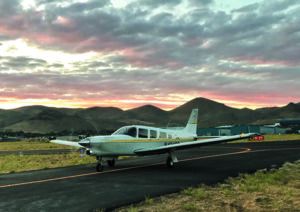
Several companies have developed means to alleviate the heat problems plaguing the Turbo Lance II; if
this is the model you’re interested in, check to see if one of these kits has been installed in a candidate airplane. TurboPlus still offers intercoolers for the turbocharged Lance and Saratoga (www.turboplus.com).
Aerodynamic cleanup kits (e.g., gap seals and fairings) are available from a number of companies, including Knots 2U (www.knots2u.com) and Laminar Flow Systems (www.laminarflowsystems.com). LoPresti (www.flywat.com) offers gap seals, too, along with a redesigned cowling, which the company says improves engine cooling and reduces drag. It certainly has good looks.
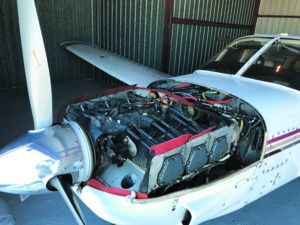
Precise Flight (www.preciseflight.com) offers speedbrakes, a standby vacuum system and a pulse-light anti-collision system. Upgraded propeller systems are available from both Hartzell (www.hartzellprop.com) and McCauley (www.mccauley.txtav.com) for most PA-32R models.
While not exactly a mod, Aircraft Sales Inc. in Smithville, Ohio, offers the Pristine Airplane refurbishment program for a variety of aircraft, but specializes in Saratoga, Lance and Cherokee Six models. The company is extremely selective when sourcing the airplane to be refurbished, which includes new paint, interior, avionics and an extensive teardown process. Most aircraft include a field-overhauled engine as part of the refurbishment process.
As for type organizations, several thousand owners of PA-28 and -32 series airplanes belong to the Cherokee Pilots Association (866-697-4737 or www.piperowner.org), which according to the website united with the Piper Owner Society. The group has an active forum and publishes the monthly Pipers Magazine, which focuses on maintenance, avionics and operational information.
We also heard from Brennan Glantz, who started the “PA-32 Six Saratoga and Lance Owners and Pilots” Facebook group. It’s extremely active and has grown to over 5000 members. Glantz says it’s we’ll moderated (no juvenile banter) and has become a good source for technical advice. In 2020 alone, there were over 4000 posts and nearly 60,000 comments. The group is planning a fly-in event, which has been delayed because of the pandemic.
OWNER INPUT
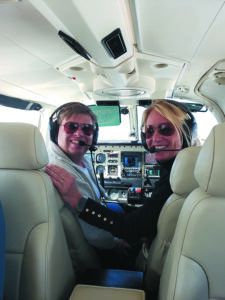
In my opinion the Piper Lance is a hidden gem in the world of general aviation airplanes. It is one of those planes that does a little of everything well. It flies we’ll (up to 160 knots), carries a good load (four to six large people), has good handling, is very comfortable and most important—it looks great on the ramp as long as it is we’ll kept and has a good paint job. I get tons of compliments on my 1976 straight-tail model and have owned it for six years.
Over the past 20 years, I am blessed to have owned and operated over 30 planes in my business travels as a jazz recording artist and motivational speaker. One of my earlier planes was the 260-HP Cherokee Six, which got me hooked on the type and class.
Although I have owned a Cessna 172, 207, 210, 320, 404, 421 and Piper models including a Dakota, Navajo Chieftain and Piper Six, the present combination fleet of the Piper Lance and Cessna 337 has served my missions best. Between the two I split 250 hours a year traveling to about 100 concert dates (pre-COVID-19, of course), which are 300 to 600 nautical miles from my middle-Tennessee home base. We also have vacation homes in Detroit, Michigan, Atlanta, Georgia and Destin, Florida, and the Lance (our favorite family vacation bird) is always fueled, preflighted and ready to go. Of all the planes I have owned, the Lance (and Cessna 337) has been the best for quick dispatch with very few surprises and delays.
The Lance is pretty much an SUV with wings and is reliable and predictable. Fuel burn is around 16 GPH for 155 to 160 knots, with a 4.5-hour endurance with reserves. My wife loves the rear cabin so much that she has never flown up front with me. She stretches out in the back with her blankets, coffee and rich-people magazines from the FBO and forces me to be her aerial limo driver.
As a 6-foot-6-inch former NBA player (with a 6-foot-tall wife), the size of the Lance’s cabin is the biggest selling point for us. Our church has an outreach we run called Urban Eagles to expose inner city kids to aviation. The Lance is the perfect plane to take up to five kids at a time for their discovery flights.
Annual inspections for our plane have been similar to inspecting a small twin and usually cost $3500 if everything works, and $7000 to $10,000 if there are a lot of fixes. Look for insurance to run $2500 to $4800, depending on experience and hull coverage.
I have no experience with the T-tail Lance, but I have a partner who owns one and has no problems, but he swears his is 10 knots faster than mine.
Secret air conditioner: There are four floor vents located fore and aft of the pilot and copilot seats that are often overlooked during preflight. Open these all up and point the vents up prior to takeoff and you will swear your plane has AC. Keep them closed in the winter to keep you cabin warm and snuggly.
There are no strange flying habits with the Lance so long as you hold it off on takeoff when it’s heavily loaded until above 75 knots (with one notch of flaps), and land it with a little bit of power in.
When asking for flight following make sure you say PA-32R (not just PA-32); ATC will treat you more like a big boy.
We have enjoyed our Lance, it has been fun to fly and we even painted it red to match my other toys in the hanger. We plan on keeping it for a very long time.
Ben Tankard – Murfreesboro, Tennessee
I would say that the lore about Saratogas being difficult to land with full fuel and two people up front seems to have missed our plane. We can make greasers pretty consistently in any configuration. You have to use the pitch trim and keep the yoke moving back gently. Our useful load is 1334 pounds, fuel burn is just under 15 GPH (ROP) and we plan on 160 knots in still-air sweet-spot altitudes. The wing root fairings don’t seem to have added much on the top end, but do permit cruising around 138 knots at 20 inches of manifold pressure if you want to economize.
We did an avionics upgrade with major panel work. The Garmin GTX 345 Bluetooth ADS-B transponders did not exist, so for ADS-B we went with the GTX 330ES. Our shop had a used GNS 430W on the shelf and gave us a good price so we bought that along with the GTN 750. We felt at the time that everyone knows how to fly a GNS 430W, while the GTN 750 was new. Today we probably would have gone with a GTN 650 or maybe something else.
When we reworked the panel, we moved the switches from the left side of the pilot to the center of the panel and used lighted switches. We got the plane with a Century 41 autopilot and at the time the new Garmin GFC autopilots did not exist. The Century flies very we’ll and handles turbulence just fine, plus it flies perfect coupled approaches. Yes, we still have to put the gear down ourselves and manage the throttle, but that does keep us in the loop. We have managed to acquire an entire renovated Century 41 for very little money, so we will likely stay with that for the foreseeable future.
We get some criticism for not going with electronic flight instruments, but I have to say that this is a very easy plane to fly with traditional instruments.
Paul Weintraub – via email
It’s worth sharing my experience with a fixed-gear, turbocharged Saratoga. It’s a 1981 PA-32-301T purchased roughly 18 months ago, and so far we put 400 hours on it. I am based at Angel Fire, New Mexico (KAXX), the fourth highest airport in the country with a field elevation of 8380 feet MSL and surrounded by mountains. It is an interesting flying environment to say the least. If you are interested, you can find a video that I did about flying in and out of this area and the nuances of it at https://tinyurl.com/24gzofrk.
From a buyer’s guide perspective, the things that I think are the most impressive about the Saratoga are the useful load and the roominess of the cabin. My airplane’s empty weight is 2228 pounds, with a max gross of 3600 pounds. If I fill the airplane up, that still leaves me 754 pounds for me, my wife and all of our luggage. As with any other airplane, you can remove fuel to give yourself the ability to carry more, but with 103 useful gallons, you aren’t really shorting yourself, but you’re painting yourself into a short-hop flight if you do need to remove fuel.
Because of the high field elevation at my home base, I had to go with a turbocharged version, which I do not regret. I moved into the Saratoga from a Cherokee 180, and there were days in the Cherokee 180 that with just me, my wife and 36 gallons of fuel, about 200 FPM climb was all I could coax out of the airplane. With the turbocharged Saratoga, I typically get 900 to 1100 FPM climb rates out of our valley.
My Saratoga has GAMI TurboInjectors and I run fine-wire spark plugs across the board. I run LOP with CHT temps in the 360- to 370-degree range, and I burn between 14 and 15 GPH with a true airspeed of about 145 knots at my typical cruise altitudes of 10,500 to 12,500 (since I have to make the climb over the mountains on just about every flight). My plane does have LoPresti gap seals.
I went with a fixed-gear version of the Saratoga because when I bought the plane, I was a pretty low-time (200 hours) pilot, had zero complex time and was worried about insurance costs, plus … because “every landing in Angel Fire is a crosswind landing,” it gave me more confidence. With a hull value of $190,000, my insurance is roughly $2000 per year.
One of the best things about the Saratoga is how roomy the cabin is. I am not a small guy—I’m very wide chested. When I was doing my primary flight training, I was always shoulder-to-shoulder with my instructors. In the Saratoga, I have several inches of space between me and my passengers.
As a matter of fact, there is enough space that if my wife wants to go to the back of the plane while on a long flight, she can slide between the seats and right to the back of the plane. That’s a little hard to do if the rear center console/cooler is installed, but if it is removed, that transition is easy.
The location of the CG envelope of the airplane demands that it’s loaded aft. This is easy to do with the large, wide rear door, plus the door flips up to allow you to get just about anything in the back of the airplane. Seat removal is super easy, and in minutes you have a cargo plane.
I have flown Beech Bonanzas a couple of times, and it seems that the Bonanza is the most commonly compared model to the Saratoga, primarily because of similar payloads and six-passenger capacity.
The Bonanza’s controls are smoother and “touchier” than the Saratoga. If flying a Bonanza is like flying a BMW, then flying the Saratoga is like flying a King Ranch version of a Ford Pickup.
When my wife and I were looking at airplanes, she summed it up pretty we’ll when she said, “Pilots buy the Bonanza because of how the plane feels to them, pilots buy a Saratoga because of the way the plane feels to their passengers.”
Spencer Hamon – Angel Fire, New Mexico

